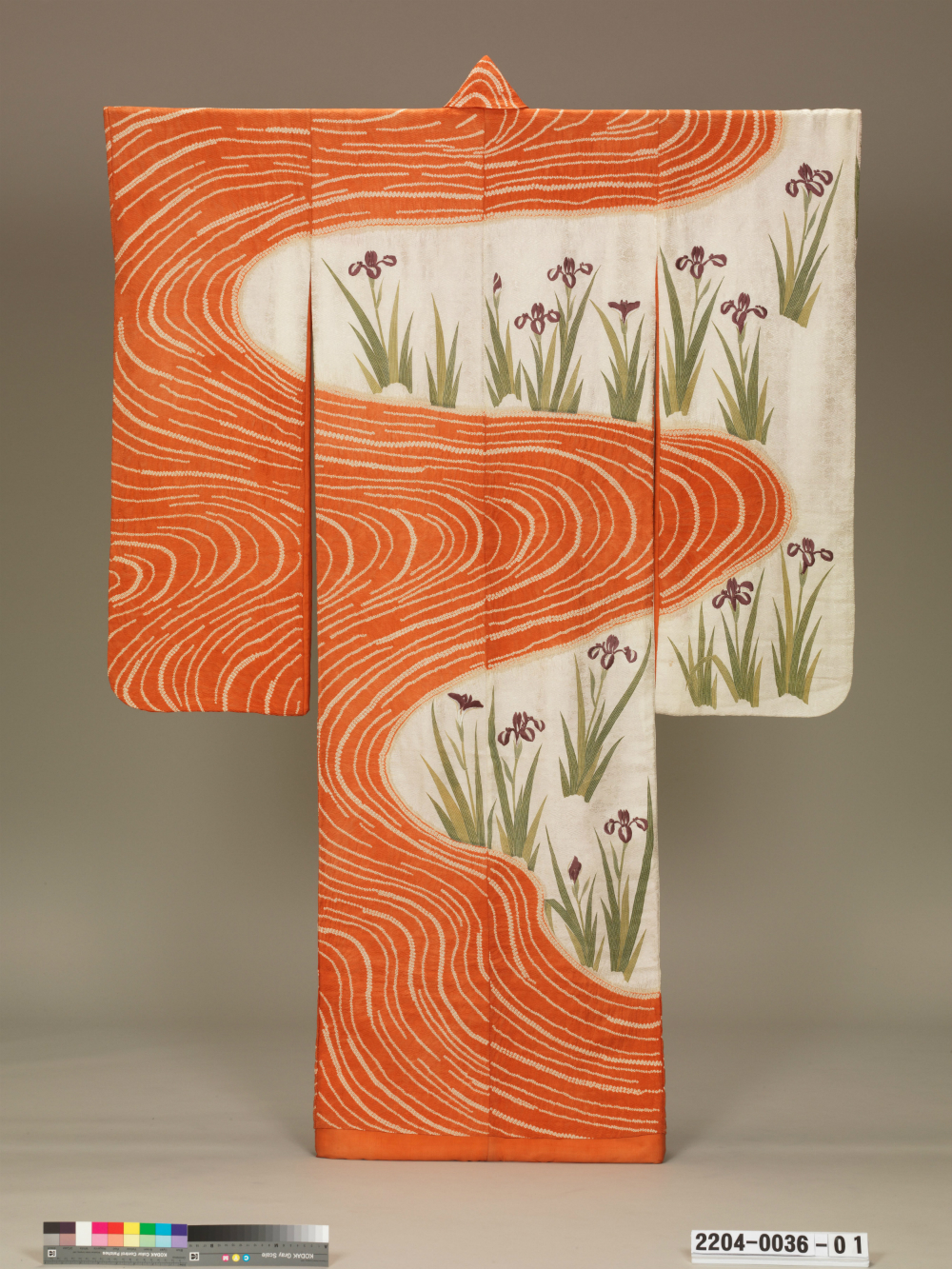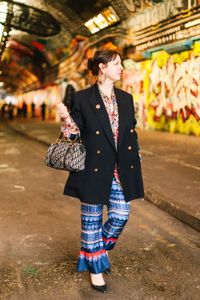Secrets of the Kimono: what you need to know about the V&A's new show
With the museum’s latest exhibition, ‘Kimono: Kyoto to Catwalk’ opening this weekend, show co-curator Anna Jackson tells Fashion Editor at Large Jess Wood about Japan’s most iconic garment, and why it’s influenced everyone from McQueen to Freddie Mercury and Star Wars…
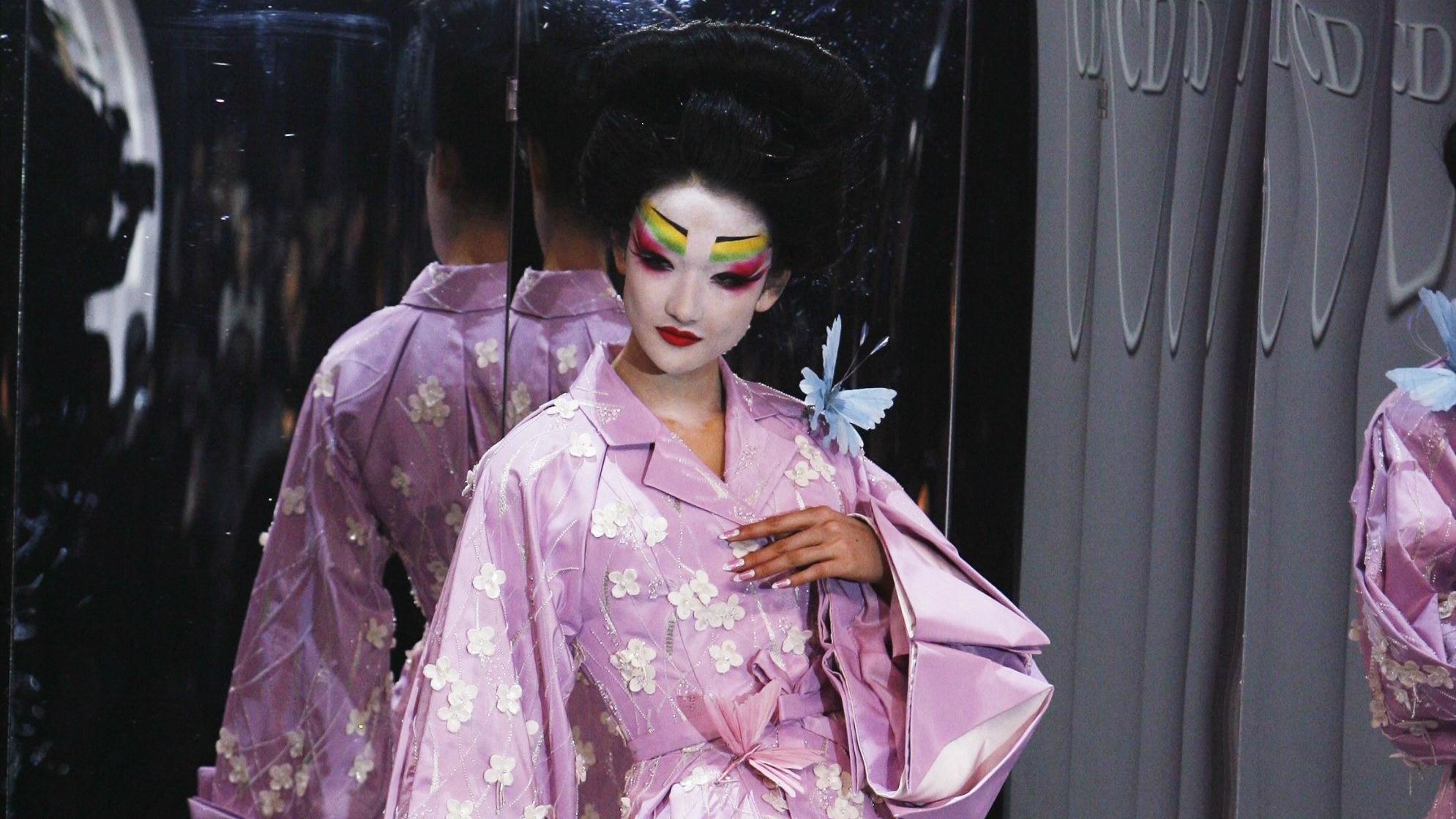
With the museum’s latest exhibition, ‘Kimono: Kyoto to Catwalk’ opening this weekend, show co-curator Anna Jackson tells Fashion Editor at Large Jess Wood about Japan’s most iconic garment, and why it’s influenced everyone from McQueen to Freddie Mercury and Star Wars…
I look forward to the V&A’s big shows almost more than I look forward to checking out Daniel Lee’s latest frenzy-inducing #newbottega bags at Milan Fashion Week. Which is saying a lot. This week, the V&A will unveil Europe’s first-ever major exhibition devoted to kimono – which means, in Japanese, quite literally ‘thing to wear’. But which, of course, refers to the garment recognised around the world as a simple, square-cut robe synonymous with traditional Japanese culture.
The country’s national dress dates back hundreds of years and is a symbolic costume for geisha and sumo wrestlers alike. So far, so ‘yes, and…?’ Naturally, the show is filled with rare and precious pieces (including a 17th Century treasure from Kyoto) as well as famous ones, like Alec Guinness’ costume for the part of Obi-Wan Kenobi in Star Wars, pieces worn by Bjork and Madonna, and iconic Dior couture looks by John Galliano. But it’s more significant than that. Up until now, the European fashion capitals of Paris and Milan have been viewed as the global epicentres of style and trends. But in examining this most iconic Japanese piece and its relationship with Western fashion, the show recognises Asia’s importance and influence.

This exhibition traces the history of the kimono from the 17th Century up to its present-day iteration as cool streetwear for a new generation of Japanese fashionistas and designers. “I wanted to make people understand that they’re not boring codified costumes, that they are about fashion,” Anna Jackson, co-curator of the exhibition, tells me. In a way, she explains, the strength of the kimono has also been to its detriment. “Because its shape hasn’t changed, that’s what has put it on the margins of fashion in one sense,” she says. “So we didn’t want to show Western fashion directly beside a kimono because we didn’t want to suggest that the kimono is this timeless, unchanging item and that only people in the West are creative and transformative.”
But the kimono has been enjoying a revival at the hands of the Gen X and Gen Z cool crowd, says Jackson. “After the war, the Japanese started wearing Western dress, and kimonos became something associated with the past, something you only wore for special occasions. But the younger generation don’t have that baggage, and there’s been a reaction to Western-style fast fashion, with every shop selling the same things. There’s been this search for personal identity, and people started to buy vintage kimonos and style them up in their own way – you might wear it with a proper obi one day, or hike it up a bit and wear it with jeans. That’s really inspired a new generation of kimono makers.” Here are some fascinating kimono facts I learned from my curator chat…
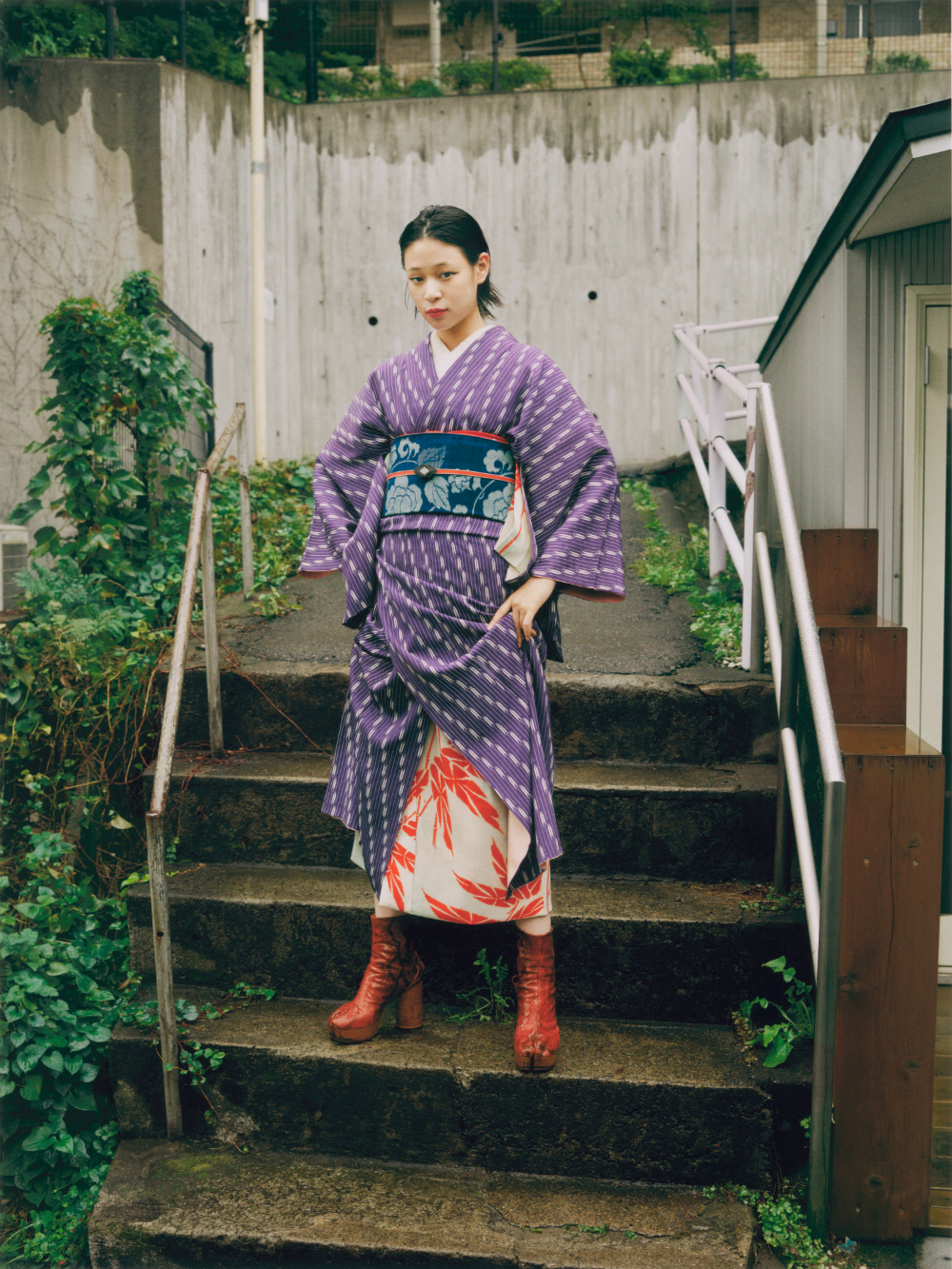
They’re a body-diversity dream: ‘textile first, shape second’
“In the West, the fulcrum of any garment is the waist – whether it goes in or out, or is high-waisted or low-waisted…We trace fashion through changes in shape and the body parts accentuated in each period – from the Victorian corsets which whittled the waist, to the Edwardian bustle which emphasised the bottom. Whereas kimono (and a lot of Japanese fashion) hangs from the shoulder. The fundamental shape of the kimono has never changed and the body shape underneath is irrelevant. Everybody wears a kimono in more or less the same size. Instead, they’re about what’s happening on the surface and the changing fashions involve the patterns and colours of the textiles used.”
They’ve inspired a whole century of key European designers…
After Japan opened up to the West in the 19th Century, kimono crazes regularly swept European high society. Realising how popular they were, Japanese makers even started to create what they called ‘kimono for foreigners’. Produced in colours and patterns to appeal to a Western sensibility, extra panels were added to the bottom so they draped like a skirt, and they were sold in department stores like Liberty. Revolutionary early 20th Century designers including Paul Poiret, Madeleine Vionnet (the inventor of the bias-cut) and Jeanne Lanvin were all inspired by the draping and shape of the kimono.
Celebrity news, beauty, fashion advice, and fascinating features, delivered straight to your inbox!

…and of course, Alexander McQueen and John Galliano
“The notion of the neck and the curve of the collar is important – they hang backwards, to expose the neck, and you see this a lot in McQueen’s designs (like the McQueen costume worn by Bjork for the cover of her album Homogenic). The kimono is worn in layers - the outer kimono tends to be worn without a sash and has a sturdier padded hem. Galliano drew on many elements for his designs at Dior – they have these big hems that go down to the ground like the kimono.”
They’re ideal for rock star performers and futuristic films
“Because they’re timeless in one sense, they can also be futuristic – which is why the style was chosen for Star Wars’ Obi-Wan Kenobi. Performers including Boy George and Freddie Mercury also loved them. Queen toured Japan and Freddie became really interested in the culture and in collecting Japanese antiques, and his kimonos were part of that. Because it’s quite a gender-neutral garment, it allowed him to play on those ideas of sexuality and gender. It’s a very male bravado performance but at the same time, he’s wearing quite a feminised gown. In the footage we have of Mercury, he’s wearing a bold, bright kimono – but the actual kimono we have in the show is much softer, in pastel colours, which apparently he wore at home.”

Even the V&A needed to call in a kimono-styling expert
“We always show kimonos on a T-bar stand because that’s the best way to see the pattern and the shape – and also because older kimonos are very delicate and the accompanying obi sashes and undergarments don’t often survive. But the issue is that you then see them as 2D works of art, not clothes. So where we can in this show, we’ve styled them on mannequins. We asked a kimono expert and stylist called Kohka Yoshimura (from the famous Bunka Gakuen Costume Museum in Tokyo) to come and help us. In the historic section, we’ve done it by using the outer kimonos that don’t have to be tied, and made a false kimono underneath to pad them. Kohka told us that even in Japan she hadn’t seen them displayed like that. She was quite impressed with our amazing mounting team!”
Obis are meant to clash, not match
“For the 20thcentury pieces that we were able to style up with obis, we had lots of fun vintage shopping with Kohka in Tokyo to find the right accessories. I’d keep picking obis and she’d say ‘no, that’s too tasteful, it would have been much more clash-y”, and pick out bright yellow ones covered in carnations and I’d be thinking, ‘oh my goodness’… . Obis don’t match in the way we think of matching in the West, they’re a clever combination of colours or pick up a reference from the pattern. She’s styled them all up, doing different obi techniques with each one, and they look absolutely stunning.”
Kimono: Kyoto to Catwalk opens at the V&A Museum on Saturday 29th February. Click through the gallery below for a sneak peek at some of the exhibition's imagery
Belted wrap coat, designed by Duro Olowu, A/W 2015, England
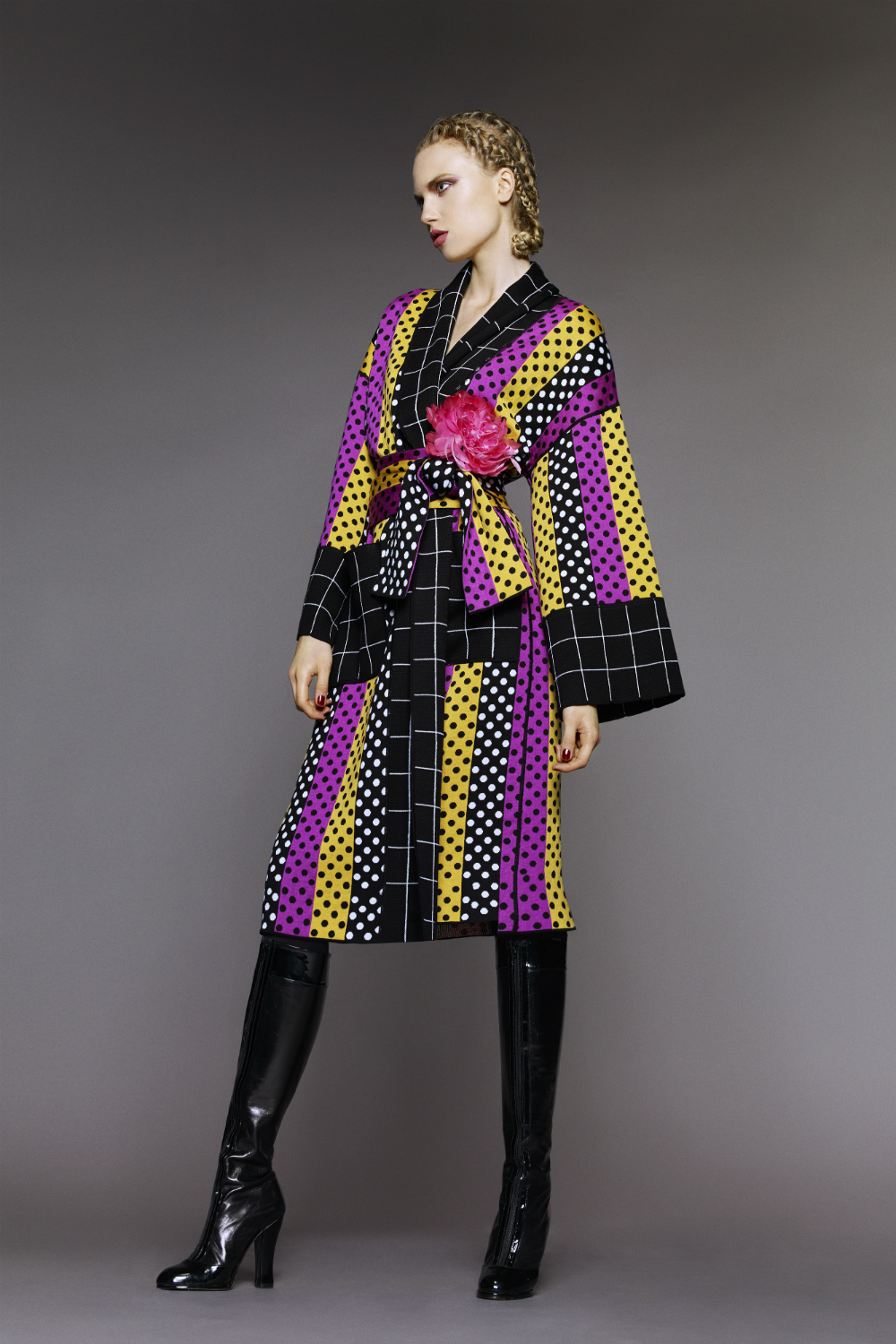
'Beyond', kimono for a woman, designed by Moriguchi Kunihiko, 2005, Kyoto, Japan

Mantle, designed by Paul Poiret, about 1913, Paris, Victoria and Albert Museum
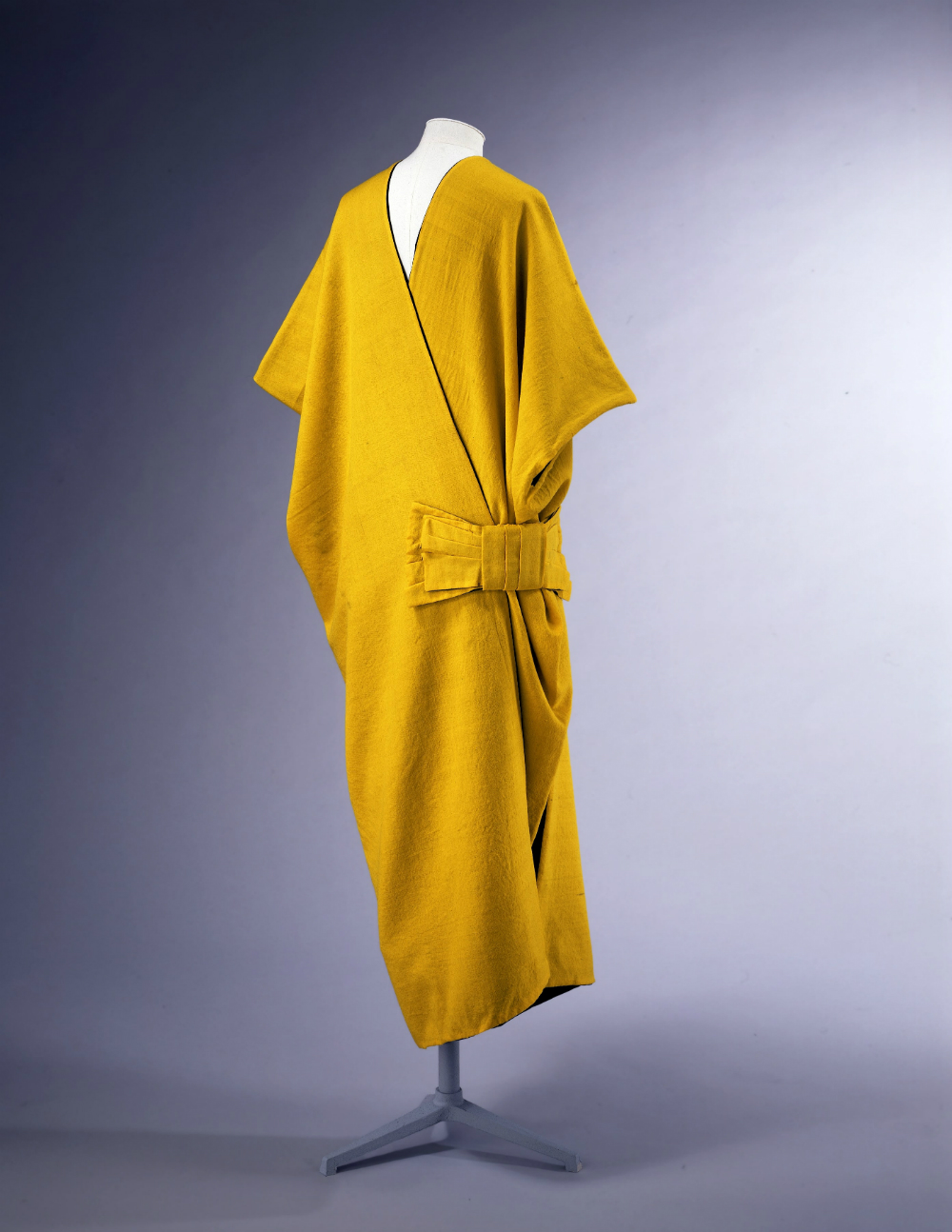
'Kaidan' ( staircase hanging scroll) by Kobayakawa Kiyoshi (1899-1948)
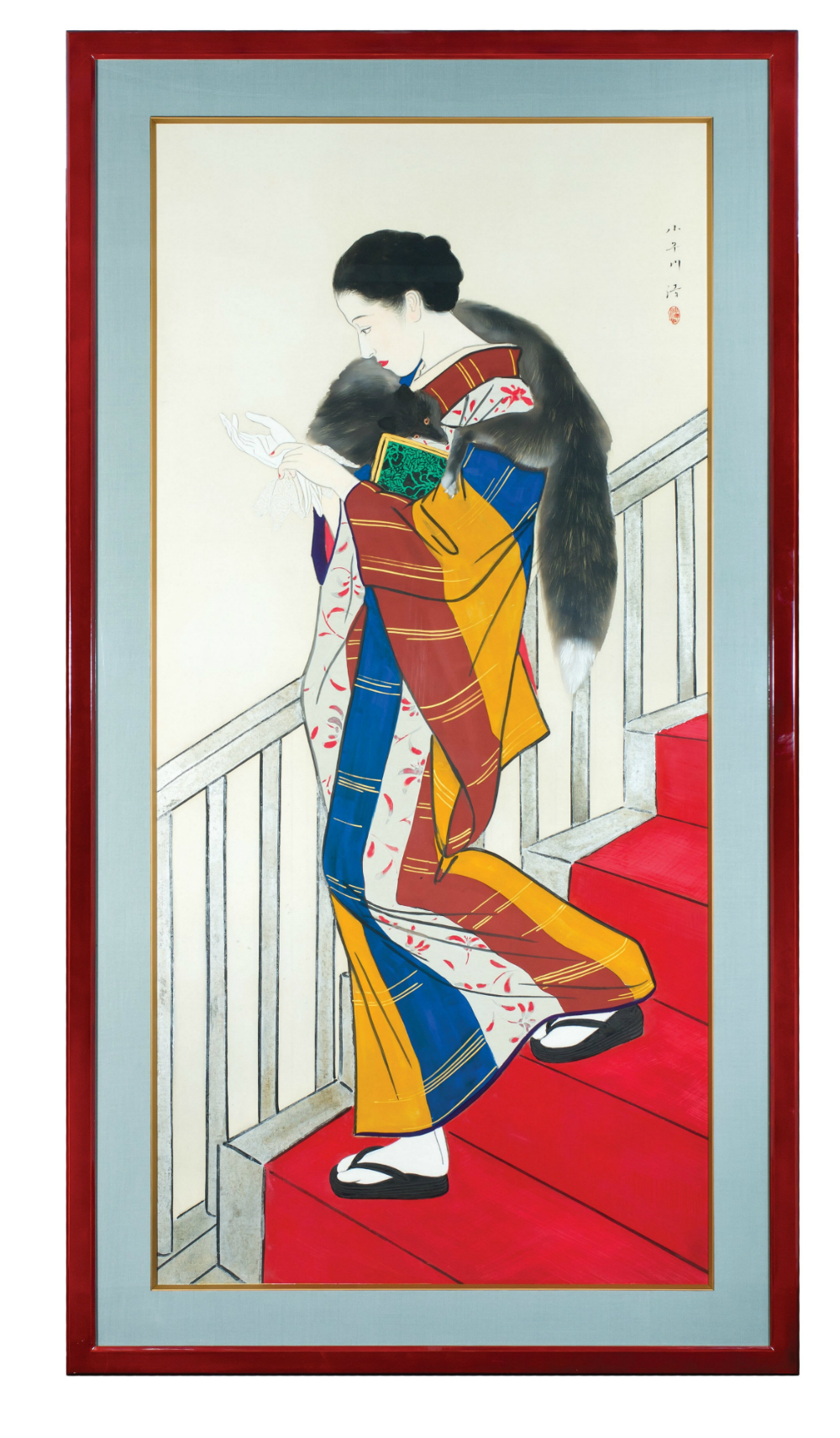
Night gown (Japonse Rock) Japan, 1700-1750, Collection of the Gemeentemuseum Den Haag
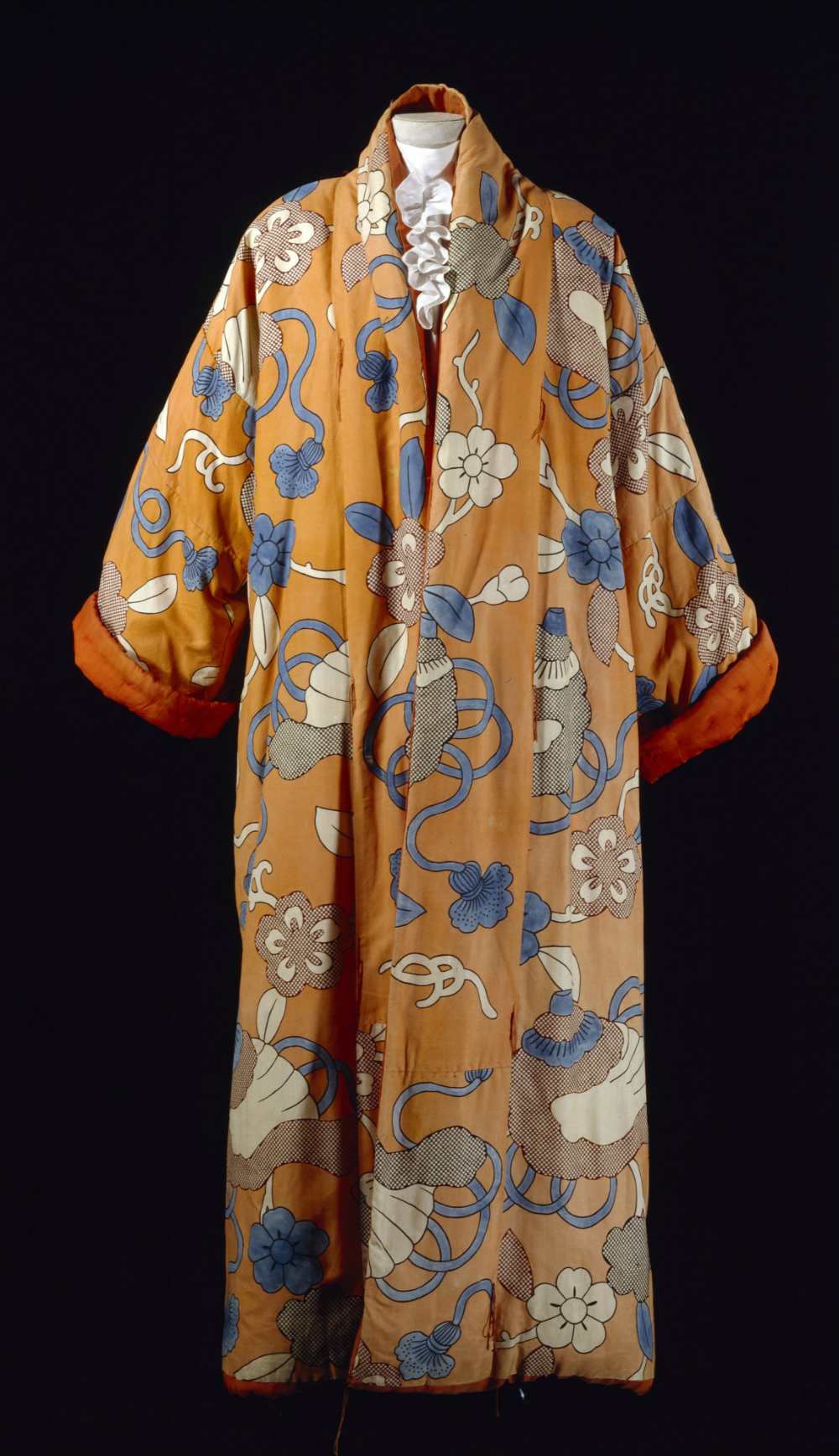
Kimono for export, probably Kyoto, Japan, 1905-15, Victoria and Albert Museum
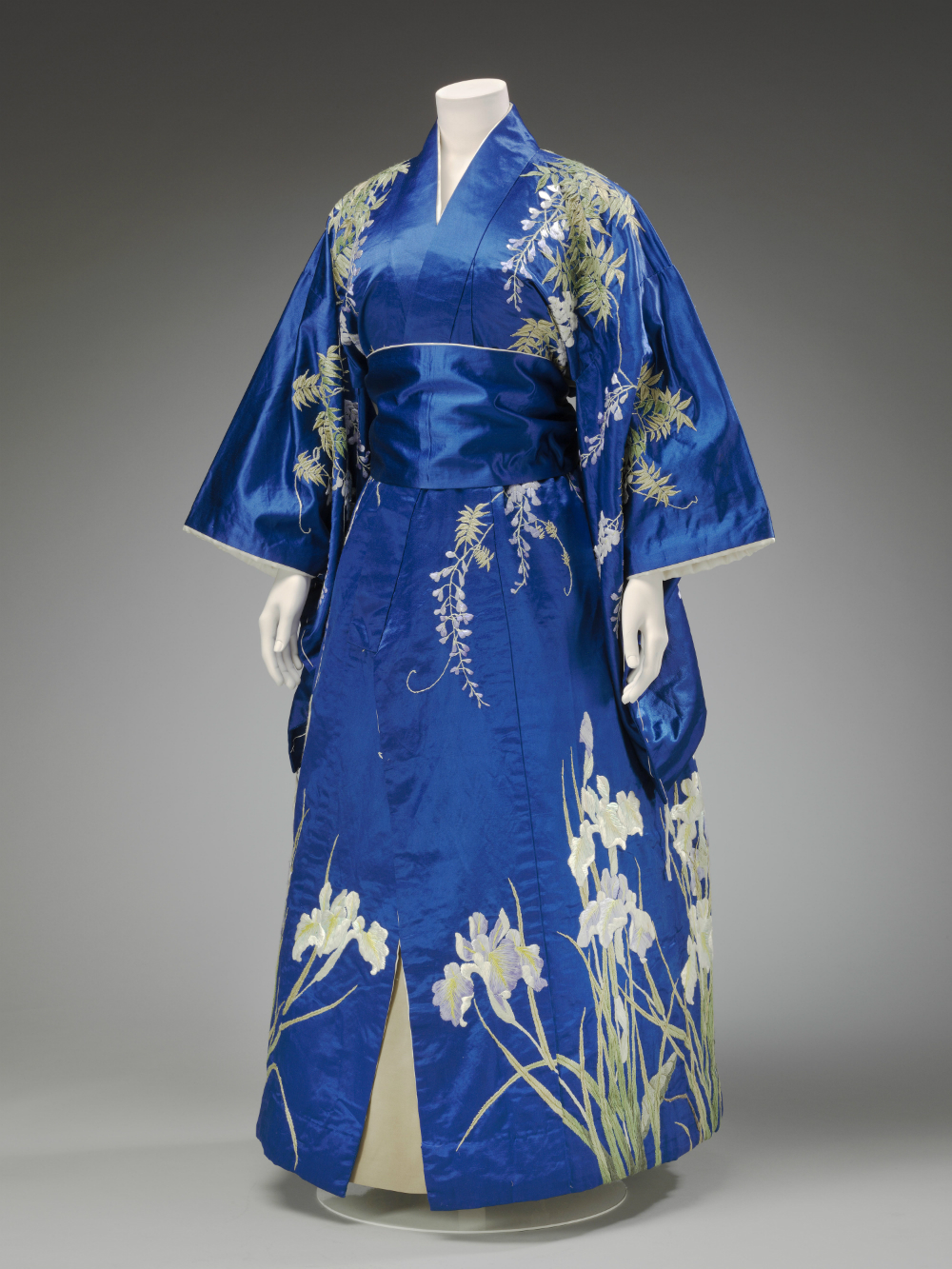
Kimono for a young woman (furisode), 1905-20, probably Kyoto, Japan, Khalili Collection, K106
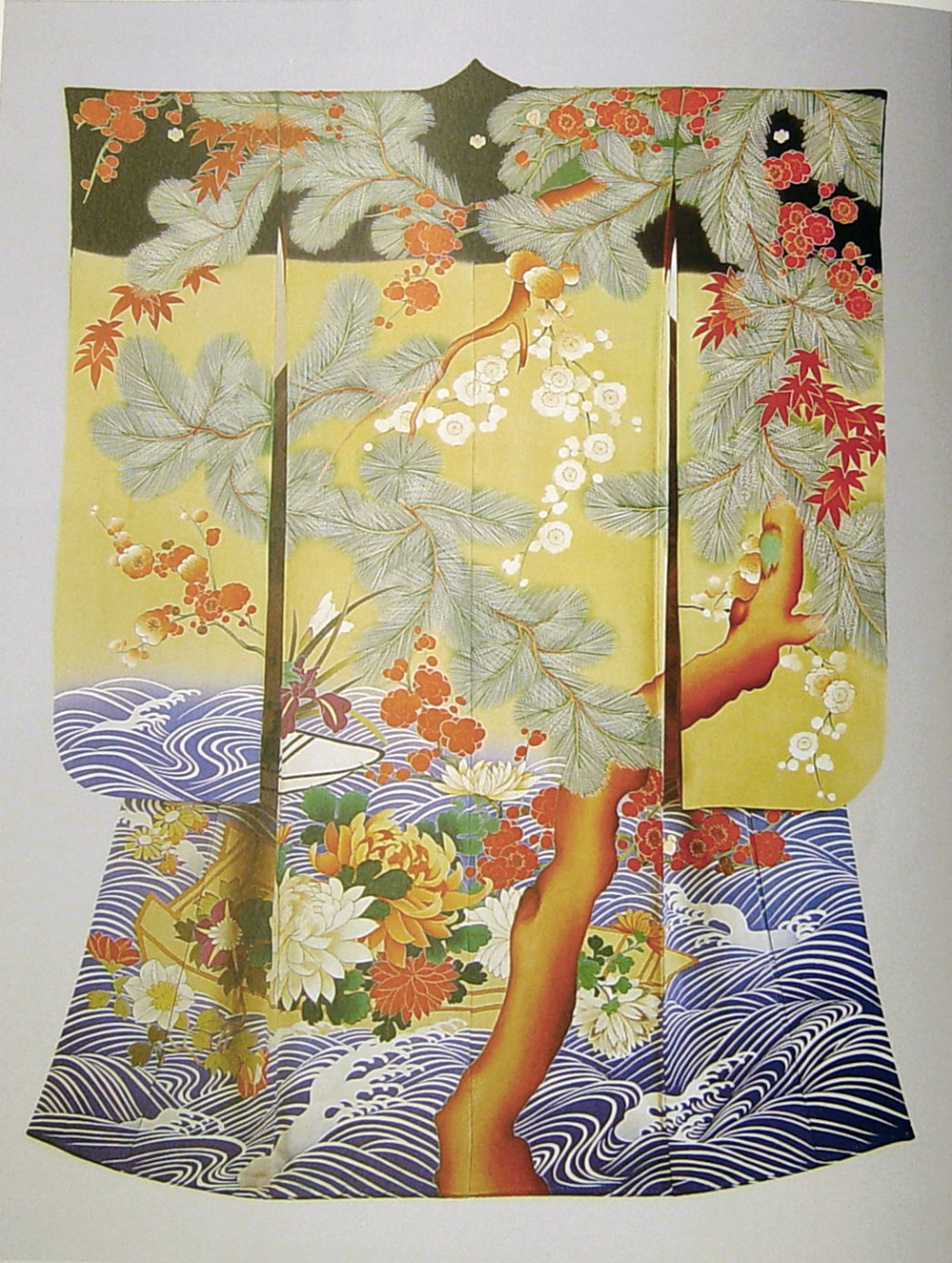
Outer-kimono for a young woman. Probably Kyoto, 1800-1830, Joshibi Art Museum
